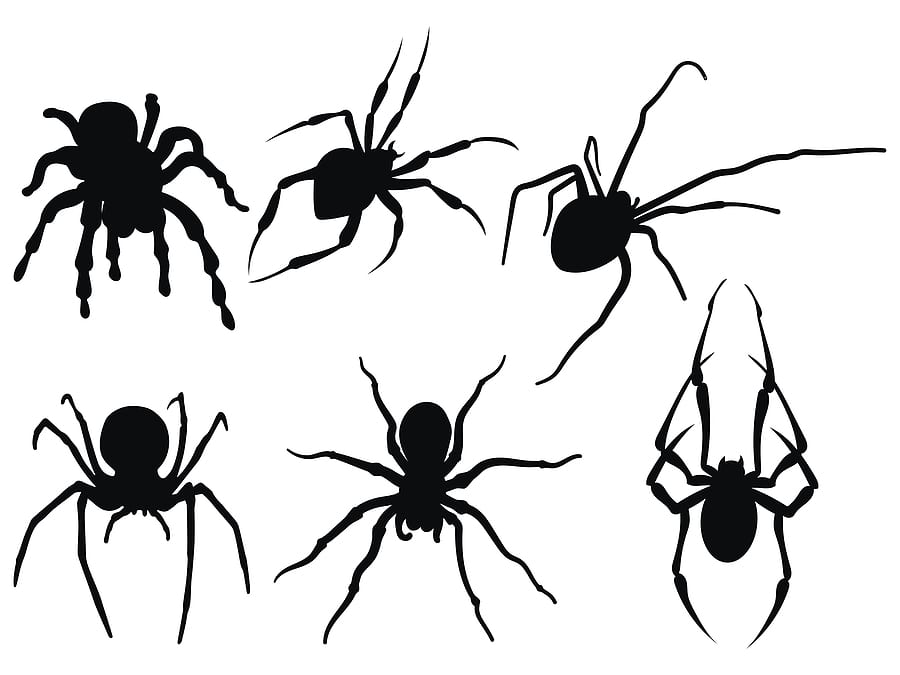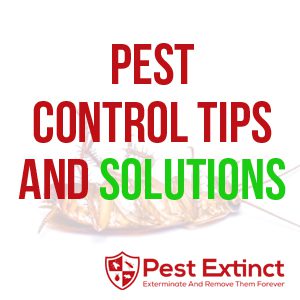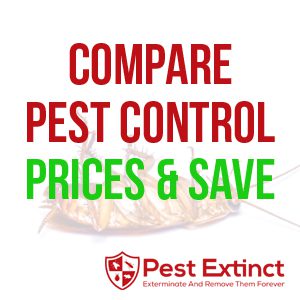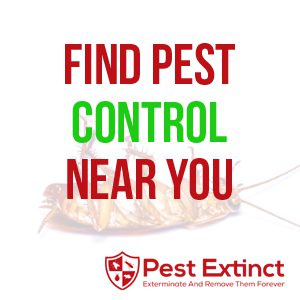
A Guide to Venomous Pests and How to Deal with Them Safely
Dealing with pests is a common challenge for many homeowners, but it becomes particularly concerning when these pests are venomous. Identifying venomous pests and understanding how to deal with them safely is crucial to protect your family and pets. In this guide, we will explore some of the most common venomous pests, signs of their presence, and the safest ways to handle them, emphasizing the importance of professional pest control services.
Common Venomous Pests
Venomous pests are often considered rare or limited to specific geographical areas, but in reality, they are more common and widespread than many people realize. These potentially dangerous creatures can be found in homes across the world, making it essential to be aware of their presence and characteristics.
Spiders
Types to Watch Out For
- Black Widow: Identified by the red hourglass shape on its abdomen.
- Brown Recluse: Noted for its violin-shaped mark on the back.
Signs of Infestation
- Unusual spider webs, typically in sheltered, undisturbed areas.
- Sudden appearance of unexplained, painful bites.
Handling Precautions
- Avoid reaching into dark, undisturbed places without protection.
- Use gloves when moving items in storage areas, woodpiles, or garages.
Scorpions
Recognizing Them
- Scorpions are easily identified by their curved tail with a stinger on the end and their claw-like pincers.
Signs of Their Presence
- Sightings of scorpions in warmer climates, especially in dry areas.
- Scorpion droppings, which look like tiny pellets.
Safe Handling Tips
- Check shoes and clothing before putting them on.
- Seal any cracks and openings in your home’s foundation.
Bees and Wasps
Identifying Risky Species
- Africanized Honey Bees: More aggressive than common honeybees.
- Yellow Jackets and Hornets: Aggressive species of wasps.
Indicators of Nests
- Visible hive or nest, often found in secluded areas.
- Increased activity of bees or wasps around a particular area.
Dealing with Nests
- Do not attempt to remove a hive or nest on your own.
- Keep a safe distance, especially if allergic to stings.

Venomous Pests in Everyday Settings
Commonly Encountered Species
- Spiders: Species like the Black Widow and Brown Recluse are found in many regions and can inhabit common household spaces like basements, attics, and garages.
- Scorpions: Particularly in arid and semi-arid regions, scorpions can find their way into homes, seeking shelter and food.
- Snakes: Certain venomous snakes, depending on the region, may venture close to human dwellings, particularly in areas near their natural habitats.
Finding Shelter in Homes
These pests often enter homes unintentionally, searching for food, moisture, or shelter. Once inside, they can remain hidden, making them even more dangerous as their presence may go unnoticed until an accidental encounter occurs.
Risks and Precautions
Potential Health Risks
Venomous pests pose various health risks, from painful bites or stings to severe allergic reactions and, in rare cases, life-threatening envenomation. Children, the elderly, and pets are particularly vulnerable.
Precautionary Measures
- Regularly inspect and clean storage areas, basements, and other less-frequented parts of the home.
- Seal cracks and gaps in the home’s exterior to prevent entry.
- Be cautious when handling stored items, especially if they have been undisturbed for some time.
Handling Venomous Pests
Dealing with venomous pests requires a careful approach to ensure safety and effectiveness. Whether you’re facing a lone spider in your home or a more significant infestation, understanding the right way to handle these situations is crucial.
Immediate Responses to Venomous Pest Sightings
Stay Calm and Maintain Distance
If you encounter a venomous pest, the first step is to remain calm. Avoid sudden movements that could provoke the pest and maintain a safe distance. This is especially important with venomous snakes, which may strike if they feel threatened.
Identify, Don’t Interact
Try to identify the pest from a safe distance, but do not attempt to touch or capture it. Accurate identification can be crucial in deciding the next steps, but it should not come at the risk of personal safety.



Safety Precautions in Your Home
Regular Home Inspections
Conduct regular inspections of your home, particularly in areas where venomous pests are likely to hide. This includes basements, attics, garages, and any places with clutter that can provide a hiding spot.
Seal Entry Points
To prevent pests from entering your home, seal cracks and holes in the exterior of your house, including areas around doors and windows. Proper sealing can significantly reduce the chances of venomous pests finding their way inside.
Use Protective Gear When Necessary
If you must move items where pests may be hiding (like woodpiles or storage boxes), always wear protective gloves and clothing. This can prevent unexpected bites or stings.
Professional Pest Control Services: A Must for Venomous Pests
Expert Removal
The safest way to handle venomous pests is by calling professional pest control services. They have the expertise, equipment, and techniques to safely remove these pests from your property.
Knowledge and Experience
Professional pest control technicians are trained to deal with venomous pests. They can accurately identify the species and understand their behaviors, which is crucial in determining the best removal strategy.
Preventative Measures
Beyond removal, pest control experts can offer advice and solutions to prevent future infestations. This might include recommendations for property maintenance, landscaping adjustments, or ongoing monitoring services.
Handling venomous pests is not something to take lightly. While there are measures you can take to reduce the risk of encounters, dealing with an actual infestation requires professional intervention. Attempting to handle venomous pests on your own can be dangerous and is not recommended. If you encounter a venomous pest in your home, the safest course of action is to contact professional pest control services.



Educating Yourself About Venomous Pests: Knowledge is Power
An integral part of dealing with venomous pests effectively is educating yourself about them. Knowing what kinds of venomous pests are common in your area, understanding their behavior, and being aware of the signs of an infestation can be incredibly empowering. This knowledge not only helps in early detection but also in preventing encounters with these dangerous creatures.
Understanding Local Venomous Pests
Research Common Pests in Your Area
Different regions are home to different types of venomous pests. Researching the specific types that are common in your area can give you a head start. This might include venomous spiders like the Black Widow or Brown Recluse, scorpions, or even certain types of snakes.
Learn Their Habits and Habitats
Understanding where these pests are most likely to be found and what attracts them can help you make your home less inviting. For example, some spiders prefer dark, undisturbed areas, while certain snakes might be drawn to overgrown vegetation.
Recognizing Signs of Infestation
Physical Signs of Pests
Learn to recognize the physical signs of venomous pests, such as webs, nests, burrows, or droppings. Regular checks in and around your home can help you spot these signs early.
Bites and Stings
Knowing what different venomous bites and stings look like, and the symptoms they can cause, is crucial. This knowledge can be vital in seeking prompt medical attention if you or a family member is bitten or stung.



Preventative Measures
Home Maintenance
Regular home maintenance can go a long way in preventing venomous pest infestations. This includes keeping your home clean, reducing clutter, and properly storing food and waste.
Landscaping and Outdoor Precautions
Keeping your yard well-maintained, with trimmed vegetation and cleared debris, can reduce hiding spots for venomous pests. Be cautious in areas like woodpiles, sheds, and gardens.
When to Call the Professionals
Despite all precautions, the possibility of encountering venomous pests cannot be entirely eliminated. Knowing when to call professional pest control services is crucial. If you suspect an infestation or encounter a venomous pest in your home, it’s time to reach out to the experts.
Understanding venomous pests is a critical step in dealing with them effectively. By educating yourself about the types of venomous pests in your area, their behavior, and the signs of their presence, you can take proactive steps to prevent encounters and infestations.
Does Venomous Pest Control Cost More?
A common question many homeowners and business owners have is whether controlling venomous pests incurs more costs than dealing with non-venomous pests. Understanding the pricing structure and factors that influence the cost of venomous pest control can help in setting realistic expectations and budgeting appropriately.
Factors Influencing the Cost of Venomous Pest Control
Type of Pest
The type of venomous pest significantly impacts the cost. Different pests require different removal methods, equipment, and expertise. For instance, removing a venomous snake typically requires more specialized skills compared to dealing with common spiders.
Severity and Scope of Infestation
The extent of the infestation is a major cost determinant. A larger or more widespread infestation will generally require more resources, time, and expertise to effectively manage, thus increasing the cost.
Risk and Safety Measures
Dealing with venomous pests often involves additional risks and requires stringent safety measures. This may include specialized equipment or additional personnel, which can contribute to higher service costs.
Location and Accessibility
The location of the infestation and ease of access also play a role in determining cost. Hard-to-reach areas may require more effort and time to treat, potentially increasing the overall expense.
Recurrence and Long-Term Management
If there is a high risk of recurrence, ongoing management and monitoring services may be necessary, which could involve additional costs compared to a one-time treatment.



Comparing Costs with Non-Venomous Pest Control
While venomous pest control can sometimes be more expensive than dealing with non-venomous pests, this is not a universal rule. Each situation is unique, and the cost will depend on the specific circumstances of the infestation.
The Value of Professional Venomous Pest Control
Safety and Effectiveness
The potential risk associated with venomous pests makes it worthwhile to invest in professional pest control services. Professionals have the training to safely and effectively remove these pests, reducing the risk of injury or improper handling.
Long-Term Savings
Investing in professional venomous pest control can lead to long-term savings. Effective management and preventive measures can minimize the chances of future infestations, which can be more costly to resolve.
Peace of Mind
The assurance that comes with professional pest control services is invaluable. Knowing that your home or business is safe from venomous pests provides peace of mind that often outweighs the cost.
Long-Term Management and Monitoring
After addressing immediate concerns with venomous pests, it’s crucial to think about long-term management and monitoring strategies. This ongoing vigilance can help ensure that your environment remains safe and pest-free.
Developing a Long-Term Pest Control Plan
Regular Inspections
Schedule regular professional inspections, especially in seasons when pest activity is at its peak. These inspections can identify potential risks or early signs of infestation.
Continuous Prevention Strategies
Maintain continuous prevention strategies in your home and surroundings. This includes keeping areas clean, reducing clutter, sealing potential entry points, and managing outdoor spaces to discourage pests.
The Importance of Educating Others
Family and Community Awareness
Share your knowledge about venomous pests with family members, including children, and your community. Educating others about identifying these pests, understanding the risks, and knowing what actions to take can help in creating a safer environment for everyone.
Workplace Education
If you are a business owner or part of a management team, consider implementing educational programs about venomous pests for your staff, especially if your business is located in an area where these pests are common.



Keeping Up with New Developments
Stay Informed
Stay informed about new developments in pest control methods and changes in local pest populations. This can include subscribing to local pest control bulletins, attending community meetings, or following relevant online resources.
Adaptive Strategies
Be prepared to adapt your pest control strategies as new information becomes available or as environmental conditions change. This adaptability is key to effective long-term pest management.
When to Re-evaluate Your Pest Control Needs
Changes in Environment or Lifestyle
If there are significant changes in your living environment or lifestyle, such as moving to a new home or undertaking major renovations, re-evaluate your pest control needs accordingly.
After an Infestation
If you’ve experienced an infestation, it’s a good time to review and possibly upgrade your pest control strategies to prevent future occurrences.
Identifying and safely handling venomous pests is crucial for maintaining a safe home environment. While preventative measures can be taken, the safest and most effective way to deal with these pests is by enlisting the help of professional pest control services. If you suspect the presence of venomous pests in your home, do not risk your safety trying to handle the situation on your own. Contact Pest Exitnct for expert advice on keeping your home pest-free and get reliable and free pest control quotes today.

Leave a Reply